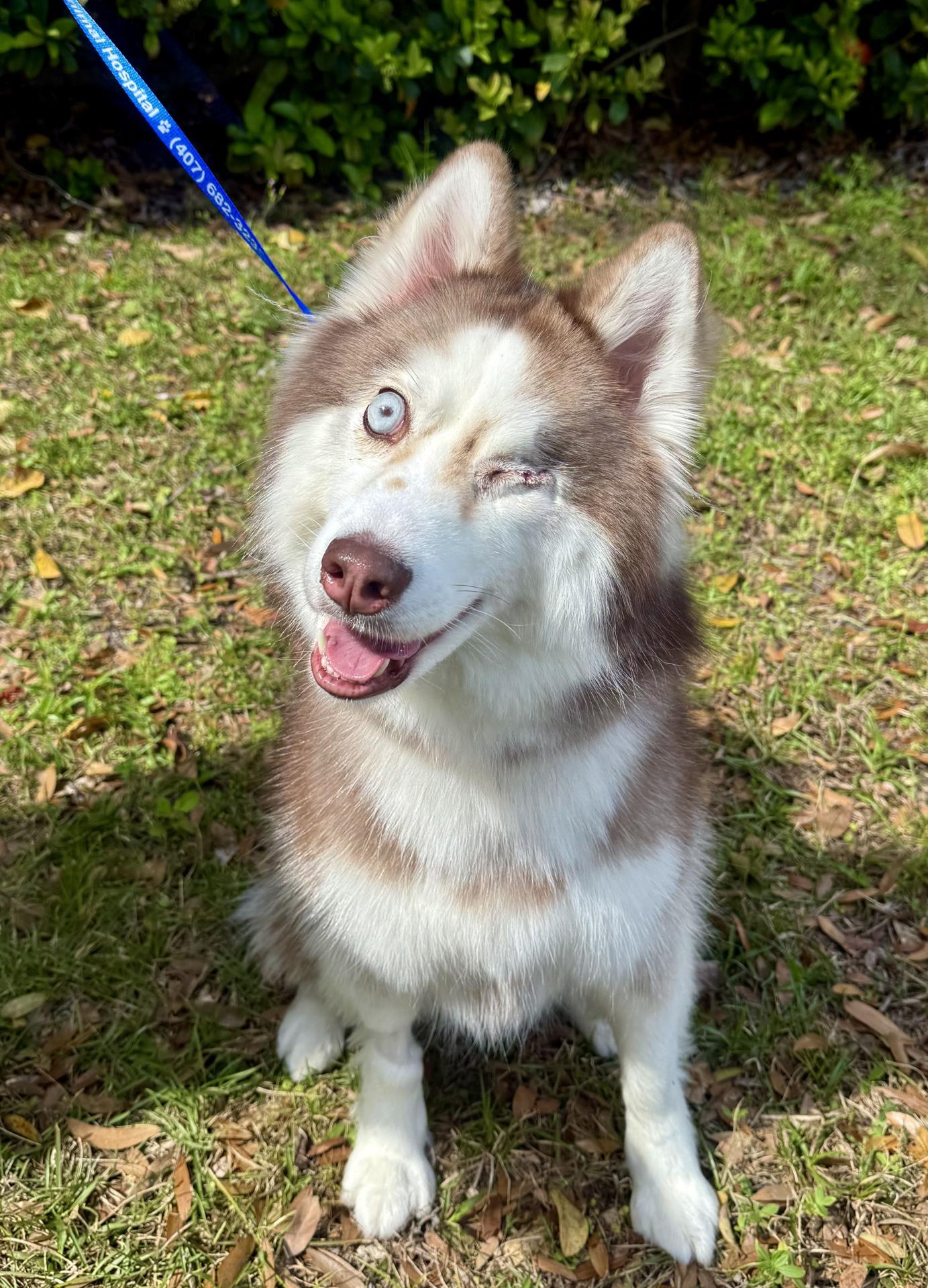
Ask The Vet! An educational and informative moment with Dr. Hunley (left) and Dr. Janosco (right) owners of Markham Woods Animal Hospital in Longwood.
Understanding Enucleation in pets


Everyone at Markham Woods knows and loves Lana—our lovable, tail-wagging Husky mascot! She’s part of our family, greeting patients and clients in the lobby every day with her friendly presence.
Recently, our sweet Lana, who is blind as a result of Glaucoma, needed a special surgery—an eye enucleation. One of her eyes had developed severe pressure that wasn’t responding to daily eye drops, making it necessary to remove for her comfort and well-being. Luckily, she was in the best hands! Our very own Dr. Dana Hunley, co-owner of Markham Woods Animal Hospital, performed the surgery with expert care.
Enucleation is a surgical procedure performed to remove an eye. While the idea of eye removal can be concerning for pet owners, this procedure is often necessary to relieve pain and it helps pets like Lana live pain-free and happy!
Why Might My Dog or Cat Need Enucleation?
Enucleation is typically recommended when an eye condition causes severe pain or cannot be managed with medication or other treatments. The most common reasons for enucleation include:
- Glaucoma: Increased pressure inside the eye, causing severe pain comparable to a chronic migraine.
- Neoplasia: Cancer inside or around the eye that affects vision and comfort.
- Severe Trauma: Injuries that cannot be surgically repaired.
- Severe Infection or Inflammation: Cases where medication cannot effectively control the condition.
If an eye is blind but not causing discomfort, enucleation is usually unnecessary. However, if blindness is accompanied by pain, removing the affected eye can greatly improve your pet’s well-being.
What Happens During the Procedure?
Enucleation is performed under general anesthesia. During surgery:
- The fur around the eye is clipped.
- The affected eye and eyelids are carefully removed.
- The skin is stitched closed over the empty socket.
- Stitches may or may not be placed within the outer layers of the skin.
Most pets return home the same day, though some—especially older animals—may stay overnight for monitoring.
Post-Surgery Care and Recovery
Pets typically recover quickly and return to normal within 1-2 weeks. Post-operative care includes:
- Medications: Antibiotics and painkillers to aid healing and relieve discomfort.
- Protective Collar: A plastic cone (Buster collar) to prevent scratching or irritation.
- Mild Discharge: A small amount of pink fluid from the surgical site or nostril may appear but should clear within a few days.
- Follow-Up Care: A veterinary check-up about five days post-surgery to monitor healing; stitches (if present) are typically removed around 10 days after surgery.
Will My Pet Experience Pain After Surgery?
Since enucleation is performed to eliminate pain, most pets experience immediate relief and appear noticeably more comfortable within 24 hours. Pain management continues at home with prescribed medications, and in the long term, there is no discomfort associated with the surgical site.
What Happens to the Eye After Removal?
In some cases, the removed eye is sent for pathology testing, similar to a biopsy. This can help confirm the underlying cause of the eye condition and determine if there are any concerns for the remaining eye or overall health. Results are typically available within three weeks and will be discussed with you.
What Will My Pet Look Like After Enucleation?
Initially, the area around the eye may appear slightly swollen or bruised, but this will resolve within a few days. Hair regrowth over the surgical site takes several weeks. Over time, the skin may slightly sink in due to the absence of the eye, but this effect is less noticeable in long-haired or darker-coated animals.
Helping Your One-Eyed Pet Thrive
Pets are incredibly resilient, and those with one eye adapt remarkably well to their new normal! With a little extra care and awareness, they can continue to live a full, happy, and pain-free life.
- Depth Perception Adjustments: They may have some difficulty judging distances or heights, so keeping them safe from high surfaces and potential hazards is important.
- Avoiding Startles: Since they can’t see on their blind side, they may be easily startled. Speaking to them before approaching from that side can help them feel more secure.
- Navigating Spaces: They might occasionally bump into objects on their blind side, so removing obstacles at their head level can prevent accidental injuries.
With love, patience, and a few small adjustments, your pet will quickly adapt and continue to enjoy life to the fullest!
At Markham Woods Animal Hospital, we prioritize your pet's health to ensure they enjoy a happy and healthy life. Schedule your pet’s appointment today 407-682-5298

